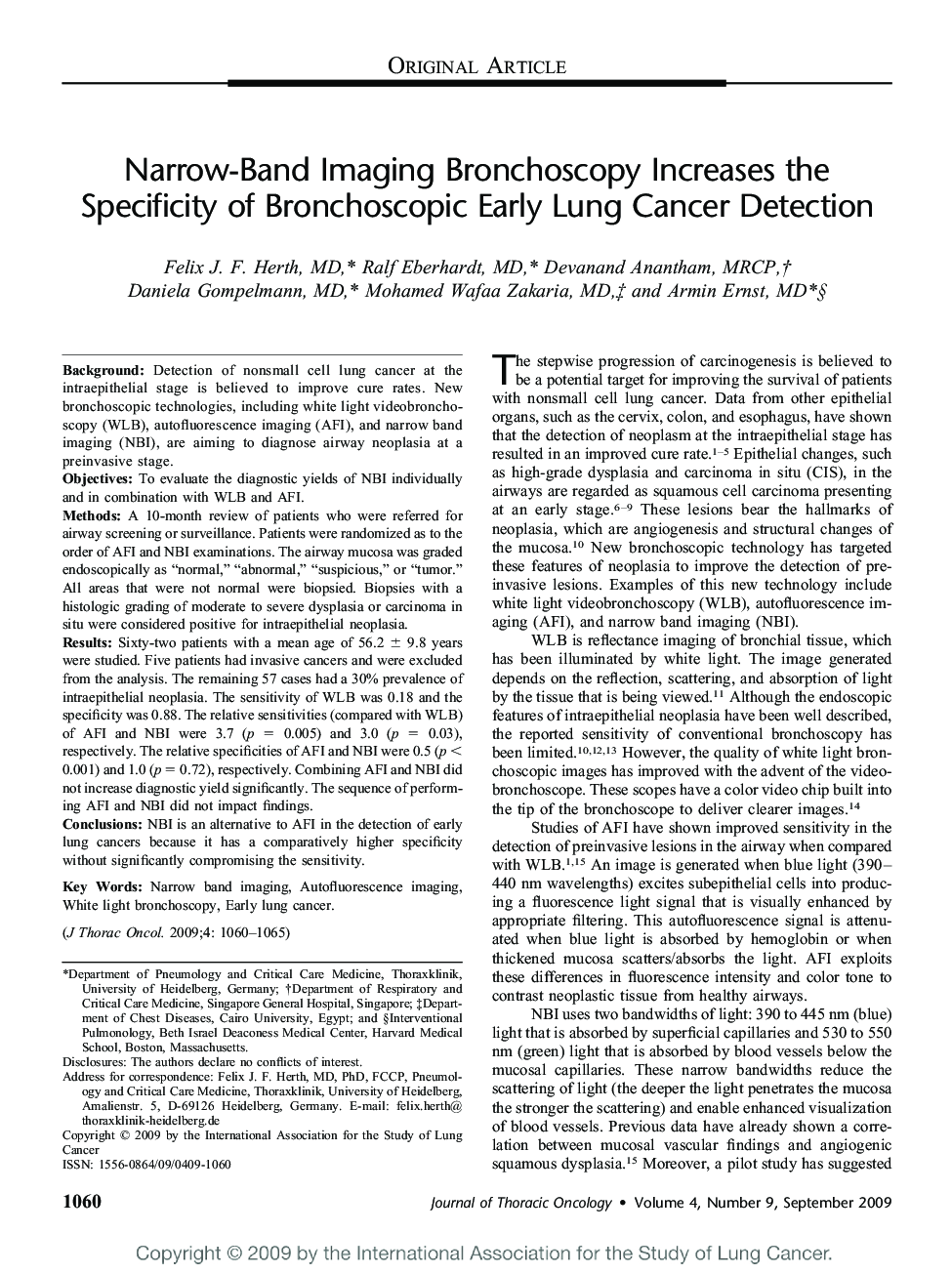| Article ID | Journal | Published Year | Pages | File Type |
|---|---|---|---|---|
| 3991013 | Journal of Thoracic Oncology | 2009 | 6 Pages |
BackgroundDetection of nonsmall cell lung cancer at the intraepithelial stage is believed to improve cure rates. New bronchoscopic technologies, including white light videobronchoscopy (WLB), autofluorescence imaging (AFI), and narrow band imaging (NBI), are aiming to diagnose airway neoplasia at a preinvasive stage.ObjectivesTo evaluate the diagnostic yields of NBI individually and in combination with WLB and AFI.MethodsA 10-month review of patients who were referred for airway screening or surveillance. Patients were randomized as to the order of AFI and NBI examinations. The airway mucosa was graded endoscopically as “normal,” “abnormal,” “suspicious,” or “tumor.” All areas that were not normal were biopsied. Biopsies with a histologic grading of moderate to severe dysplasia or carcinoma in situ were considered positive for intraepithelial neoplasia.ResultsSixty-two patients with a mean age of 56.2 ± 9.8 years were studied. Five patients had invasive cancers and were excluded from the analysis. The remaining 57 cases had a 30% prevalence of intraepithelial neoplasia. The sensitivity of WLB was 0.18 and the specificity was 0.88. The relative sensitivities (compared with WLB) of AFI and NBI were 3.7 (p = 0.005) and 3.0 (p = 0.03), respectively. The relative specificities of AFI and NBI were 0.5 (p < 0.001) and 1.0 (p = 0.72), respectively. Combining AFI and NBI did not increase diagnostic yield significantly. The sequence of performing AFI and NBI did not impact findings.ConclusionsNBI is an alternative to AFI in the detection of early lung cancers because it has a comparatively higher specificity without significantly compromising the sensitivity.
